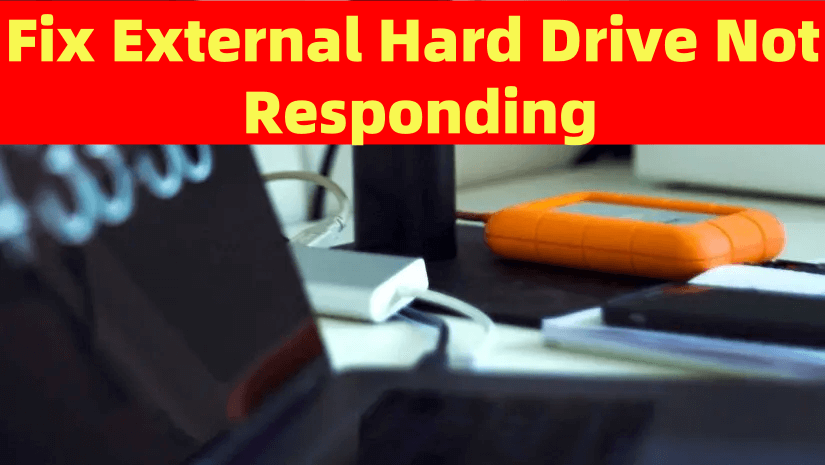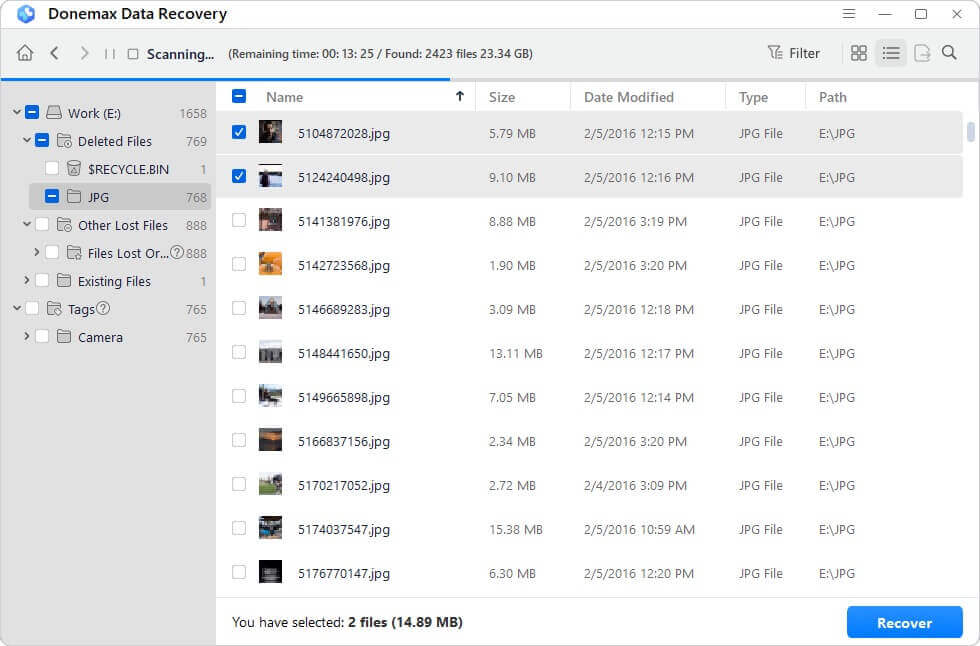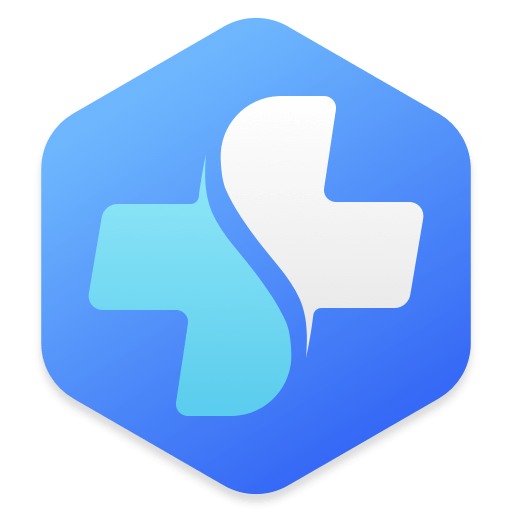Before we start: Donemax Data Recovery can help you repair damaged or crashed external hard drives on Windows or macOS. It also can help you recover lost/inaccessible/erased files from the external hard drive.
PAGE CONTENT:
External hard drives are essential tools for many users, providing extra storage and easy backup solutions. However, it can be frustrating when an external hard drive suddenly stops responding, leaving you unable to access your files. Whether you're using it for work, school, or entertainment, the importance of these drives cannot be overstated. In this guide, we will walk through several potential reasons why your external hard drive might not be responding and provide detailed solutions for fixing it.

About External Hard Drive Not Responding on Windows or macOS Computer
External hard drives serve a crucial role in data storage and backup. However, at times, they may not respond when connected to your computer. This issue can arise from a variety of causes, including connectivity problems, software glitches, or even physical damage to the device. Fortunately, there are several methods you can use to diagnose and fix this problem.
This article will guide you through the essential troubleshooting steps for resolving issues with an external hard drive that is not responding. Whether you're experiencing a simple connection issue or dealing with a more complex software or hardware problem, we've got you covered.
How to Fix External Hard Drive Not Responding on PC or Mac?
1. Primary Checks to Fix Not-responding External hard Drive
Prior moving into the technical solutions, it is important to perform a few basic checks. These simple steps may quickly resolve the issue without requiring any advanced troubleshooting.
◾Ensure the External Hard Drive is Properly Connected
A loose or faulty connection is one of the primary cause of the instant issue. Here's how to check the connection:
- Check the USB Port and Cable: Examine the USB cord that connects the computer to your external hard disk. If the cable is damaged or frayed, it could be causing the issue. To see whether this fixes the issue, try using an alternative cable. Additionally, test the USB port to ensure it's functioning properly.
- Use another USB Port or Cable: Sometimes, the USB port on your computer might be malfunctioning. To rule out this scenario, try connecting the external hard drive to a separate USB port. Try connecting the drive straight to your PC if you're using a USB hub.
◾Power Supply Issues (For External Drives with Separate Power Sources)
Some external hard drives require an additional power supply, while others are powered through the USB connection itself. If your external hard drive has a separate power adapter, ensure that it is functioning properly.
- Check if the Power Adapter is Working: If the drive has a separate power cord, check whether the adapter is working. Look for any visible damage to the power supply, and if possible, test it on another compatible device.
- Try Plugging into a Different Power Outlet: Sometimes the issue may not lie with the external hard drive but with the power source. Plug the power adapter into a different outlet to see if this resolves the issue.
2. Quick Steps to Fix Your External Hard Drive
If the preliminary checks don't resolve the issue, you can move on to some basic troubleshooting steps. These actions are simple and often address the most common causes of external hard drive failures.
◾Restart Your Computer
Usually, a restart fixes the issues related to the computer's operating system or the external hard drive's recognition.
◾Disconnect and Reconnect the External Hard Drive
After disconnecting your computer's external hard disk and waiting a short while, reconnect it. Doing so can help reset the connection and might solve the problem.
◾Try the Drive on a Different Computer
To determine whether the issue lies with the external hard drive or your computer, try plugging the drive into a different computer. If the drive works on the second computer, the issue may be related to your computer's settings or drivers.
◾Check for Driver Issues
If the drive isn't recognized, it could be due to a driver conflict or corruption. Here's how to check and update drivers:
- Update Drivers via Device Manager (Windows):
- Choose Device Manager by pressing Win + X.
![Choose Device Manager by pressing Win + X]()
- Your external hard drive can be found by expanding the Disk drives section.
- Choose Update driver with a right-click on the drive.
![Choose Update Driver with a right-click on the drive]()
- Follow the prompts to automatically search for and install the latest drivers.
- Choose Device Manager by pressing Win + X.
- Reinstall the External Hard Drive Drivers:
If updating doesn't work, try uninstalling the drivers and reinstalling them. Afterward, restart your computer, and Windows should reinstall the appropriate drivers automatically.
3. Fix File System Errors of the External Hard Drive
External hard drives can experience file system errors that prevent them from responding. These errors can occur due to improper ejection, power loss, or corruption. If you suspect a file system issue, here's how to fix it:
◾Common File System Errors (Corrupt or Unreadable)
File system errors can render your external hard drive unreadable. In such cases, you might encounter messages such as "The disk is not formatted" or "The drive is unallocated." This usually indicates corruption within the drive's file system.
◾Check Disk Tool (Windows) or Disk Utility (Mac)
Both Windows and Mac have built-in tools to check and repair file system errors.
- Windows:
- Locate your external hard disk by opening File Explorer.
- Choose Properties by doing a right-click on the drive.
- Select Check from the Error Checking section of the Tools menu.
![Select Check from the Error Checking section of the Tools menu]()
- Allow Windows to scan and correct any file system issues by following the instructions.
- Mac:
- Open Disk Utility from Utilities folder via Applications.
- From the sidebar, choose your external hard drive.
- Tap on First Aid and then click Run to scan and repair the drive.
![Tap on First Aid and then click Run to scan and repair the drive]()
◾Run a System Check to Fix File System Problems
For deeper issues, use system check commands like CHKDSK on Windows to fix corruption.
- CHKDSK Command (Windows):
- Press Win + X and open Command Prompt (Admin).
- Enter chkdsk X: /f, substituting the drive letter of your external hard drive for "X".
![CHKDSK Command (Windows)]()
- To launch the scan and correct any mistakes, press Enter.
- First Aid in Disk Utility (Mac):
- If Disk Utility's First Aid tool didn't solve the problem, try running the fsck (file system consistency check) command via Terminal.
4. Use Disk Management Tool to Repair External Hard Drive
If your external hard drive appears in the system but is not accessible, there might be issues with disk allocation or partitioning. Here's what you can do:
◾Access Disk Management (Windows) or Disk Utility (Mac)
- Windows Disk Management:
- Choose Disk Management by pressing Win + X.
- In the drive list, locate your external hard disk.
- To create a new partition, right-click on the unallocated area and choose New Simple Volume if it appears as unallocated.
![Windows Disk Management]()
- Mac Disk Utility:
- Open Disk Utility and select your external hard drive.
- If the drive is unmounted or unallocated, you can try mounting it manually or creating a new partition.
![Mac Disk Utility]()
◾Format the External Hard Drive (If Other Solutions Fail)
If the drive is unformatted or unrecognized by your computer, you may need to format it. Be aware that formatting will erase all data on the drive.
- Windows:
- Open Disk Management and right-click on the external hard drive.
- Select Format and choose the appropriate file system.
![Select Format and choose the appropriate file system]()
- Follow the prompts to format the drive.
- Mac:
- Open Disk Utility and select the external hard drive.
- Click on Erase and choose the file system (Mac OS Extended, ExFAT, or APFS).
![Click on Erase and choose the file system]()
5. Recover Data from Corrupted or Formatted External Hard Drive
If your external hard drive is still not responding, and you need to recover important data, you can try using data recovery software or seek professional help.
◾When to Consider Professional Data Recovery
If your drive shows signs of physical damage (e.g., making clicking noises or failing to spin up), it is best to consult with a expert data recovery service.
◾Use of Data Recovery Software
If the issue is software-related, data recovery tools can help you retrieve your files. Donemax Data Recovery is a powerful data recovery program. It can help you securely and completely recover deleted, formatted or inaccessible files from your external hard drive.
Step 1. Download and install Donemax Data Recovery on your computer and connect the external hard drive to the computer.
Step 2. Open Donemax Data Recovery, select the external hard drive to start data recovery.

Step 3. Click on Scan button to deeply scan the external hard drive and find all recoverable files including existing files, inaccessible files, deleted/formatted/lost files.

Step 4. After scan, you can see all recoverable files. Just select the wanted files, click on Recover button to save them to another drive.

Donemax Data Recovery also can help you repair damaged external hard drive on Windows or macOS.
6. Fix Hardware Issues of External Hard Drive
Physical damage is one of the most challenging issues to resolve. If your external hard drive is physically damaged, the likelihood of recovery depends on the severity of the damage.
◾Signs of Physical Failure
Physical issues can manifest as abnormal noises (clicking, buzzing, grinding), overheating, or complete failure to power on. If you notice any of these symptoms, there is a chance the internal components have been damaged.
◾What to Do If the Drive Is Physically Damaged
If your drive is physically damaged, it's crucial not to try repairing it yourself. Doing so may make the situation worse. Contact a professional data recovery service immediately for assistance. They have specialized tools for safely recovering data from damaged drives.
Prevent Tips: Avoid the External Hard Drive Becoming Not-responding
To avoid future issues with your external hard drive, follow these preventive measures:
◾Regular Backups
Regularly back up your files to avoid losing important data if something goes wrong. Use both physical (external hard drives) and cloud-based backups for added security.
◾Safely Ejecting External Hard Drives
Before unplugging your external hard drive, make sure you carefully eject it. This reduces the risk of corruption or file system errors caused by improper disconnection.
◾Regular Maintenance and Checks
Periodically check the health of your external hard drive using built-in tools like CHKDSK (Windows) or Disk Utility (Mac). This can help catch potential issues before they become major problems.
◾Using Reliable Cables and Adapters
Always use high-quality, reliable cables and adapters when connecting your external hard drive. Poor-quality cables can cause connection issues and increase the risk of hardware damage.
Conclusion
An external hard drive that's not responding can be a frustrating experience, but with the right steps, it's often possible to resolve the issue. Start with basic troubleshooting like checking the connection and restarting your computer. If the issue persists, move on to more advanced solutions such as checking for file system errors or formatting the drive.
For more complex issues, data recovery tools and professional services can help retrieve your valuable files. With the tips and techniques outlined in this guide, you should be able to restore your external hard drive to working order and minimize future problems.


Donemax Data Recovery
Donemax Data Recovery is one of the best data recovery software. It is easy-to-use and can help in recovering deleted, formatted, inaccessible or lost data from HDD/SSD, external disk, USB drive, SD card, camera or other storage devices.
Related Articles
- Nov 11, 2024How to Format a Drive for PS5?
- Mar 25, 2025How to Restart or Force Restart A Windows PC?
- Jan 17, 2025How to Format an SD Card to ExFAT or FAT32 on Mac?
- Nov 27, 2024Clean Install macOS Ventura: A Comprehensive Guide
- Jan 14, 2025Convert HFS+ (Mac OS Extended) to APFS on Mac
- Feb 11, 2025How to Show Hidden Files on a USB Flash Drive?

Lucien
Lucien is a writer and a chief programmer of Donemax software who has worked in the company for 5+ years. He has written much of the content on the site and devotes to providing troubleshooting and solution for Windows and Mac users including disk cloning, data recovery, migration, eraser, error fixes.

Gerhard Chou
In order to effectively solve the problems for our customers, every article and troubleshooting solution published on our website has been strictly tested and practiced. Our editors love researching and using computers and testing software, and are willing to help computer users with their problems








